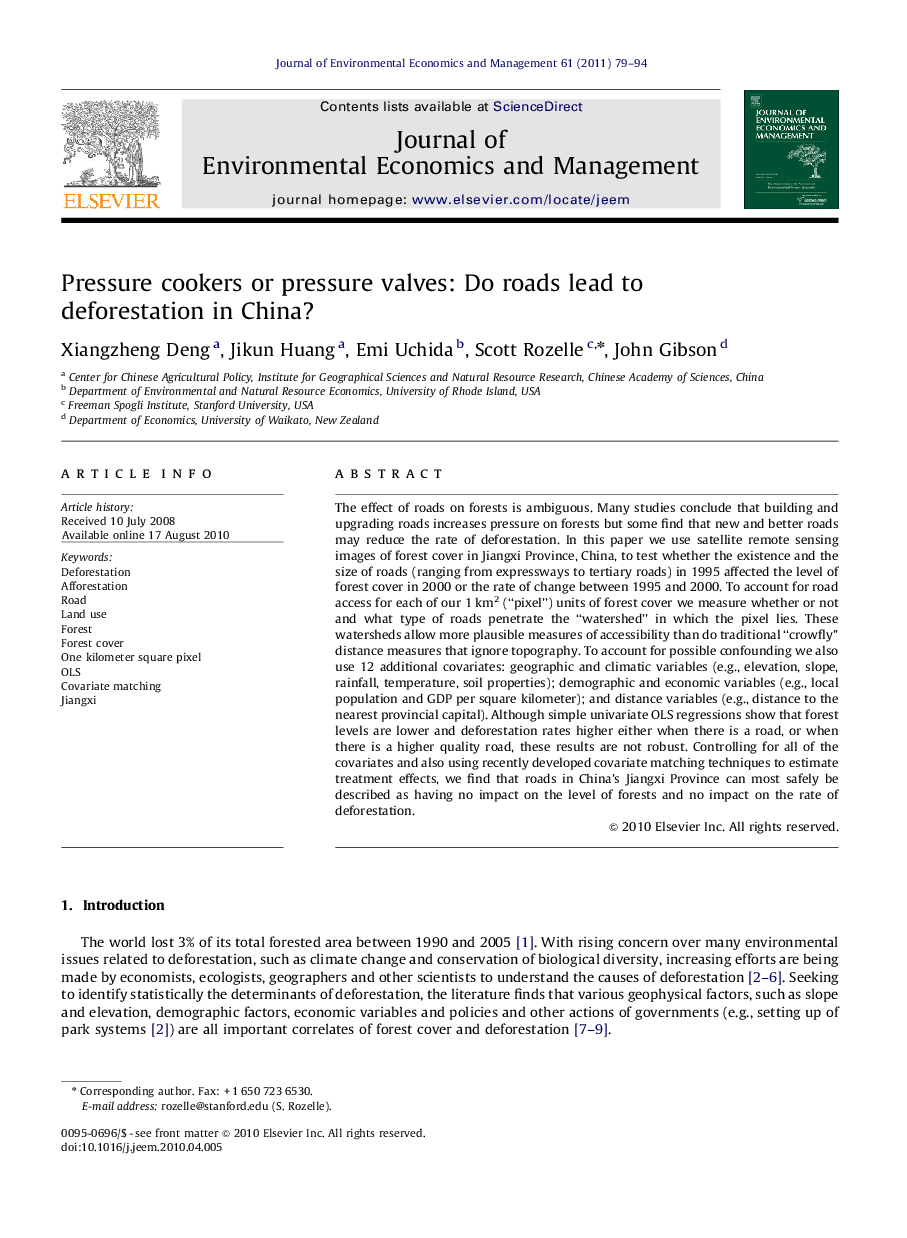| Article ID | Journal | Published Year | Pages | File Type |
|---|---|---|---|---|
| 959268 | Journal of Environmental Economics and Management | 2011 | 16 Pages |
The effect of roads on forests is ambiguous. Many studies conclude that building and upgrading roads increases pressure on forests but some find that new and better roads may reduce the rate of deforestation. In this paper we use satellite remote sensing images of forest cover in Jiangxi Province, China, to test whether the existence and the size of roads (ranging from expressways to tertiary roads) in 1995 affected the level of forest cover in 2000 or the rate of change between 1995 and 2000. To account for road access for each of our 1 km2 (“pixel”) units of forest cover we measure whether or not and what type of roads penetrate the “watershed” in which the pixel lies. These watersheds allow more plausible measures of accessibility than do traditional “crowfly” distance measures that ignore topography. To account for possible confounding we also use 12 additional covariates: geographic and climatic variables (e.g., elevation, slope, rainfall, temperature, soil properties); demographic and economic variables (e.g., local population and GDP per square kilometer); and distance variables (e.g., distance to the nearest provincial capital). Although simple univariate OLS regressions show that forest levels are lower and deforestation rates higher either when there is a road, or when there is a higher quality road, these results are not robust. Controlling for all of the covariates and also using recently developed covariate matching techniques to estimate treatment effects, we find that roads in China’s Jiangxi Province can most safely be described as having no impact on the level of forests and no impact on the rate of deforestation.
